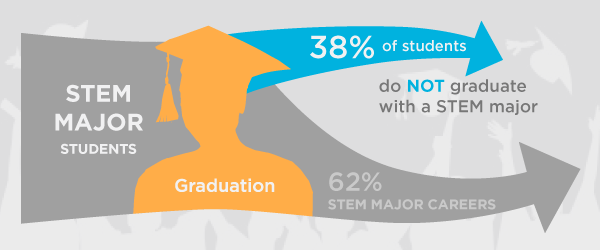The Time for STEM Schools has Come
Timothy Huneycutt |
July 16, 2013
 Last week STEMconnector® and the Next Steps Institute hosted the first of three Virtual Town Halls, or webinars, created to discuss the importance of reinventing schools to have a sharper focus on STEM education, which are aptly termed STEM Schools.
Last week STEMconnector® and the Next Steps Institute hosted the first of three Virtual Town Halls, or webinars, created to discuss the importance of reinventing schools to have a sharper focus on STEM education, which are aptly termed STEM Schools.
The first Virtual Town Hall meeting – titled “Leveraging Federal and State Resources to Support STEM Schools” – featured a varied panel of speakers who shared their own perspectives on why STEM Schools are important, and what their organizations are doing to foster the development of such schools. Out of this panel, two speakers – Jeff Weld, Executive Director of the Iowa Governor’s STEM Advisory Council, and Kari Webb, Northwest Iowa STEM Regional Manager – really stood out as champions for the STEM School movement, and they highlighted how their state is meeting the demand for better STEM education.
The theme of their presentation was growth. “Expect an organic, regional, and uniquely hybridized model for Iowa STEM schools and classrooms,” said Webb. While this presentation uses Iowa as a case study, much of it can – and should – be applied to schools in every state.
According to Webb, there are three ways to ensure the organic growth of STEM:
1.You must redesign the STEM learning environment. Students need to be seen as workers, not listeners. Therefore, they must be engaged in the learning process via a technology rich learning environment.
2.Schools must have an integrated STEM curriculum. STEM subjects must be personalized for the students in order to take them on a deeper learning experience. Rigorous, inquiry-based learning is the key here, which means that teachers must become facilitators of thought in the classroom.
3.There must be stronger community based partnerships. The process for getting students out of school and into the STEM workforce needs to be streamlined. To do so, high schools must have stronger ties with institutions of higher education and STEM businesses, and students must be provided with out-of-school, active learning opportunities within the community to keep STEM subjects fresh in their minds.
These three steps are by no means the panacea to cure and end America’s STEM crisis, but they are a great start to ensuring STEM success in Iowa’s schools, and if we were to apply these same principles on a national level, imagine how bright our future would be.
NMSI is already preparing for that bright future by providing teachers and students with the support and resources they need to transform their classrooms, but we’ve only just begun our efforts to revitalize STEM education in America. The time has come for the modern classroom, and we need to give schools all the support they can get.